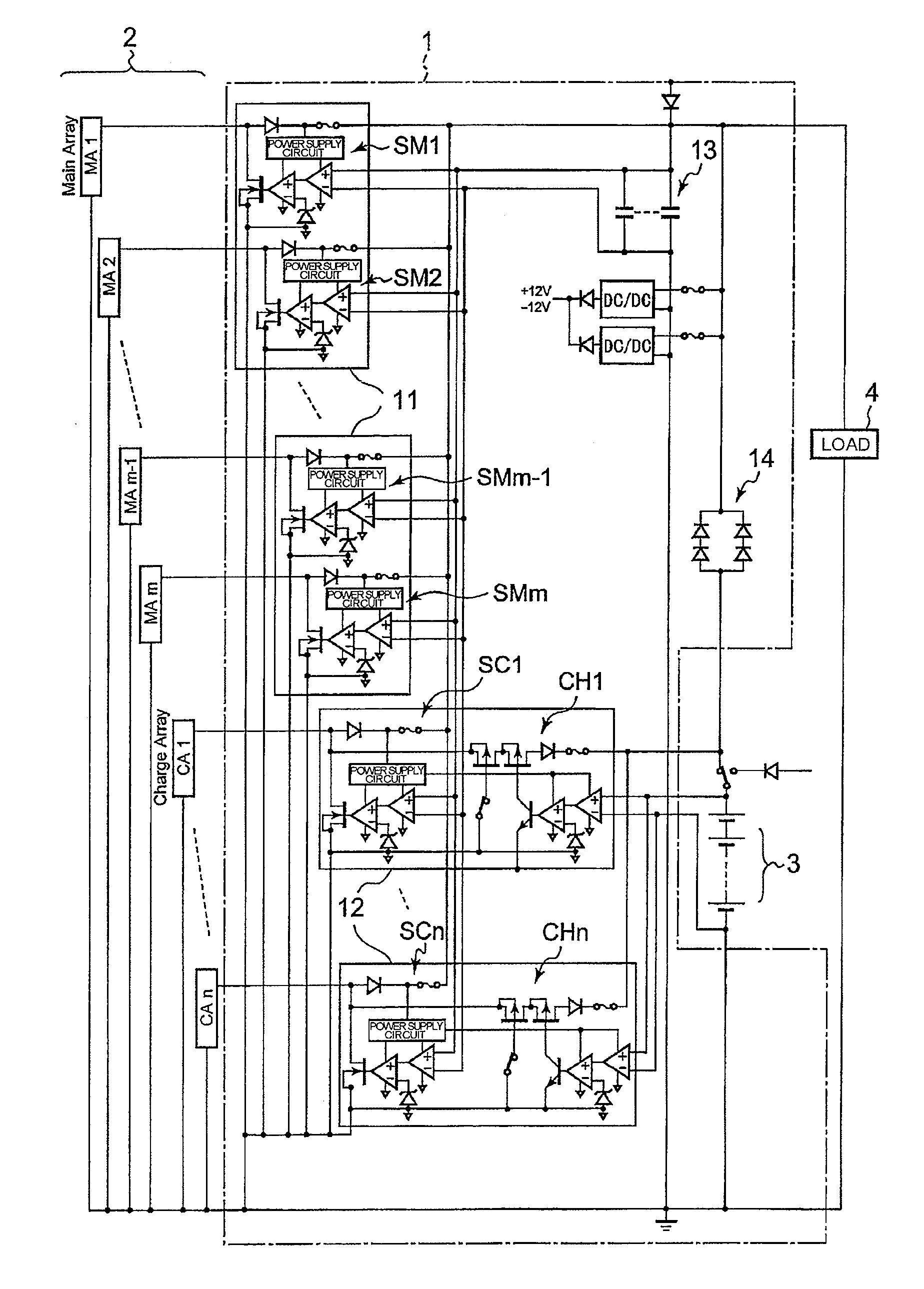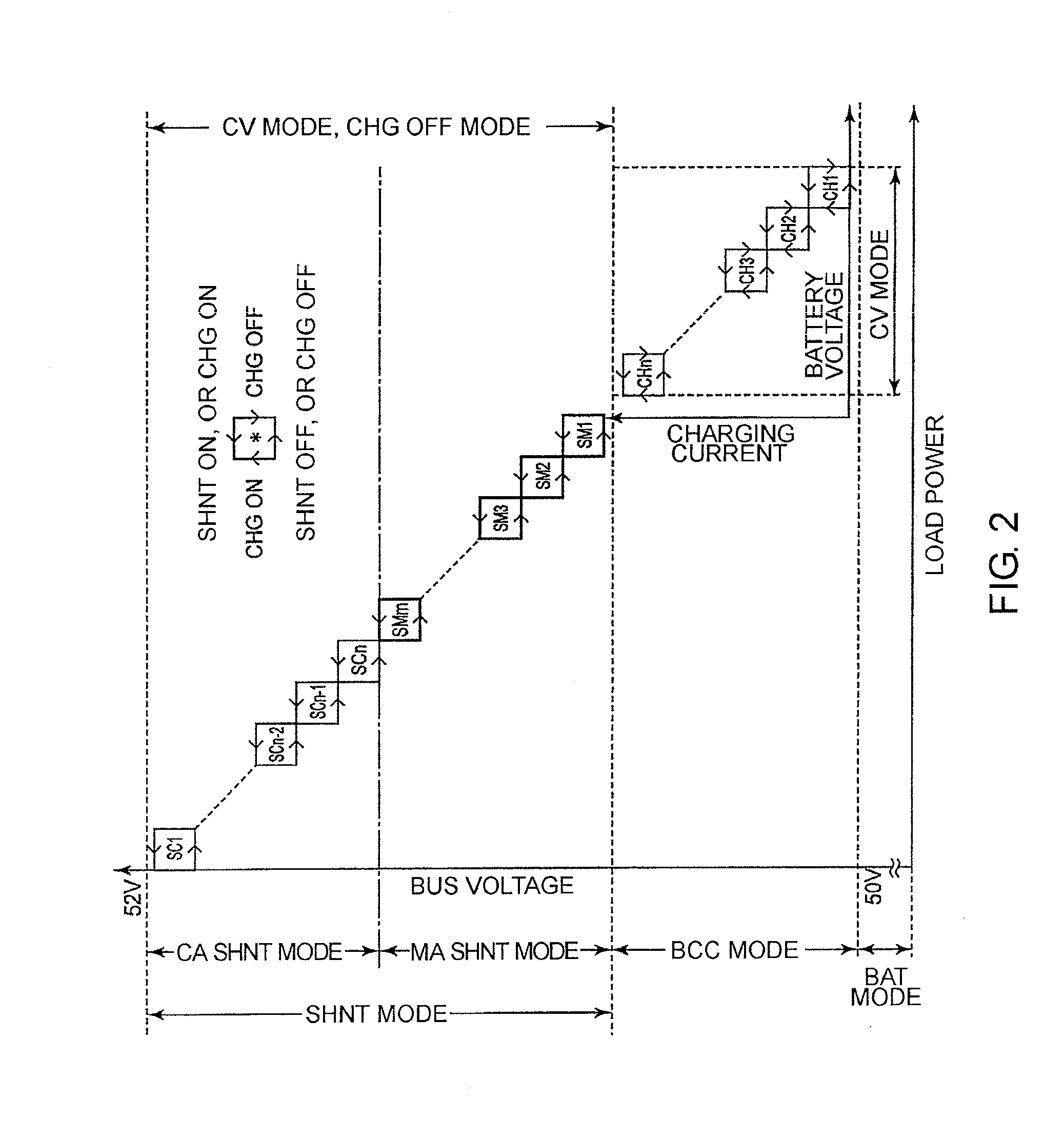Power supply controller
a power supply controller and controller technology, applied in the direction of electric vehicles, process and machine control, emergency protective circuit arrangements, etc., can solve the problems of large-scale charging circuits, complicated driver circuits, low cost, and light weight, and achieve easy modularization, easy provision, and reduced size and weight
- Summary
- Abstract
- Description
- Claims
- Application Information
AI Technical Summary
Benefits of technology
Problems solved by technology
Method used
Image
Examples
first embodiment
[0028]FIG. 1 illustrates a circuit structure of a (distributed control type) power supply controller 1 according to this invention. The power supply controller 1 is used for a power supply system and device using a solar cell and a battery as power sources, particularly, for a power supply system of a space craft such as an artificial satellite.
[0029]The power supply controller 1 is connected to a plurality of solar cells 2, a battery 3, and a load 4 and includes a plurality of MA modules 11, a plurality of CA modules 12, a capacitor bank 13, and a discharge diode 14.
[0030]The MA modules 11 each include two shunt circuits which are modularized. Shunt circuits SM1 to SMm (m is natural number) are separately connected to corresponding main arrays MA1 to MAm of the plurality of solar cells 2, which are used for only power supply to the load 4. Each of the shunt circuits includes a diode, a fuse, a power supply circuit, an operational amplifier, a comparator, a transistor switch, and a ...
second embodiment
[0063]Next, a power supply controller according to this invention is described with reference to FIG. 4.
[0064]The power supply controller illustrated in FIG. 4 is a power supply controller in which the discharge diode 14 illustrated in FIG. 1 is replaced by a battery discharge regulator (BDR) unit 41. Even in the shade case (BAT mode), the stabilization may be achieved so as to obtain substantially almost the same bus voltage as in the sunshine case by the action of the BDR unit 41.
PUM
| Property | Measurement | Unit |
|---|---|---|
| threshold | aaaaa | aaaaa |
| voltage | aaaaa | aaaaa |
| output voltage | aaaaa | aaaaa |
Abstract
Description
Claims
Application Information
 Login to View More
Login to View More - R&D
- Intellectual Property
- Life Sciences
- Materials
- Tech Scout
- Unparalleled Data Quality
- Higher Quality Content
- 60% Fewer Hallucinations
Browse by: Latest US Patents, China's latest patents, Technical Efficacy Thesaurus, Application Domain, Technology Topic, Popular Technical Reports.
© 2025 PatSnap. All rights reserved.Legal|Privacy policy|Modern Slavery Act Transparency Statement|Sitemap|About US| Contact US: help@patsnap.com



